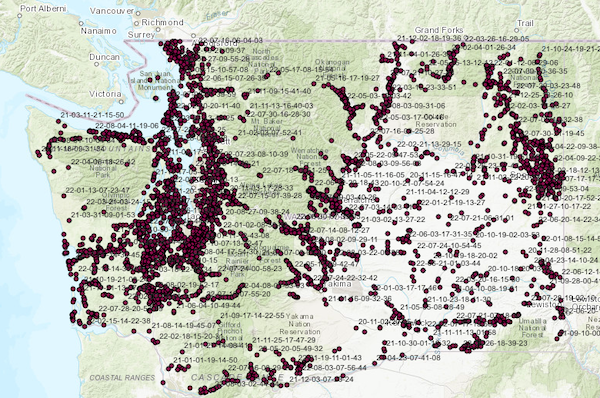
Commission Denies Roadkill Expansion, OKs Budget, Bill Requests
The Washington Fish and Wildlife Commission steered around a petition that would have expanded the list of species that can be salvaged off the state’s roads as well as legalized allowing citizens to dispatch vehicle-struck critters.
The citizen panel voted 7-1 to deny an Edmonds resident’s proposal that would have aligned roadkill regulations with those currently in Idaho, but commissioners did “request additional conversation about animal dispatch practices.”

The petition came from realtor Brad Thomsen, who noted that folks have appreciated being able to make use of the meat of deer and elk hit by trucks and cars since the commission approved the highly popular program in 2016, but questioned why it was limited to just those species.
Idaho allows “wildlife species classified as upland birds, upland game animals, big game, furbearers, and predators that may be lawfully hunted or trapped that have been killed by accidental vehicle-collisions” to be salvaged, and in July 2018 OKed dispatching injured animals.
Thomsen also said in Washington there have been times no officers were available to respond to accident scenes to put down animals that were thus “left to suffer.”
WDFW staffers in both the Enforcement and Wildlife Divisions essentially recommended the commission deny the petition, or at least limit it to big game animals, meatier by nature than smashed pheasants and rabbits.
Anis Aoude, Game Division manager, pointed to land size and human population differences between Idaho and Washington, with the latter state five times as dense as the former.
“Our main concern is the safety issue of people stopping to pick up dead things,” he said, adding that while he agreed it’s hard to see an animal suffer, firearm use along busy roads is another concern.
Aoude said that an average of 1,500 deer and 200 elk are salvaged annually in Washington, mostly on the Westside and largely closer to population centers.
He said it would be unfair to allow expanded salvaging in the 509 half of the state but not west of the crest.
There also could be issues around check-ins, he said, mandatory for hunters for species like cougars and bears but not at the moment for salvagers.
Washington roadkill collectors are required to fill out a salvage permit and keep it with the meat of their deer or elk until completely consumed. Only dead elk can be picked up in Clark, Cowlitz and Wahkiakum Counties, home to ESA-listed Columbian whitetails.
The safety issue was brought home by Vice Chair Molly Linville, who spoke to the death in late January of a women struck by a delivery truck while trying to drag a deer off Highway 28 not far from her home in Douglas County.
Still, Linville argued that the commission should consider allowing citizens to dispatch animals and noted that wolves are managed differently in different parts of the state, a reference to WDFW having the lead in the federally delisted third of Washington. A rancher, she said she hated to see animals go to waste and was the lone vote not to deny Thomsen’s petition. Commissioner Kim Thorburn was not in attendance.
In other Fish and Wildlife Commission business, members voted to:
- Acquire 1,070 acres in Yakima County adjacent to the Wenas Wildlife Area, 221 acres in Okanogan County adjacent to the Big Valley Unit of the Methow Wildlife Area, and 60 acres in Grant County adjacent to the Columbia Basin Wildlife Area;
- Request lawmakers pass a bill requiring a license to dip smelt in freshwater, among other legislative proposals;
- Send the state Office of Financial Management 2023-25 budget requests for $224 million in capital spending, with nearly half of that for hatchery improvements, and $144 million for operations. State lawmakers will make the final calls next year.
During public comment, the commission also heard from five Eastern Washington county commissioners, who spoke to predator management issues and low big game populations in their necks of the woods, and Lake Washington sockeye advocate Frank Urabeck, who called for $1.6 million to be included in WDFW’s budget request to fund a predator reduction effort to increase salmon smolt survival.
There was also a heaping handful of Wild Fish Conservancy-oriented lawyers and staffers who took issue with hatchery Chinook salmon production increases to benefit southern resident killer whales and WDFW’s legislative request today to continue the boost. (They’re also suing WDFW and the feds over it.) They had Commissioner Lorna Smith expressing “some real concern” about the agency’s approach, which led Director Kelly Susewind to “suggest you get legal information from our counsel, and that can be done in executive session.”
Speaking of, the commission did meet behind digital doors for an hour and a half and for good measure, this morning it was sued over its July decision not to adopt new wolf-livestock conflict rules. A WDFW spokeswoman said the agency hadn’t received the lawsuit and was refraining from commenting at the time.

